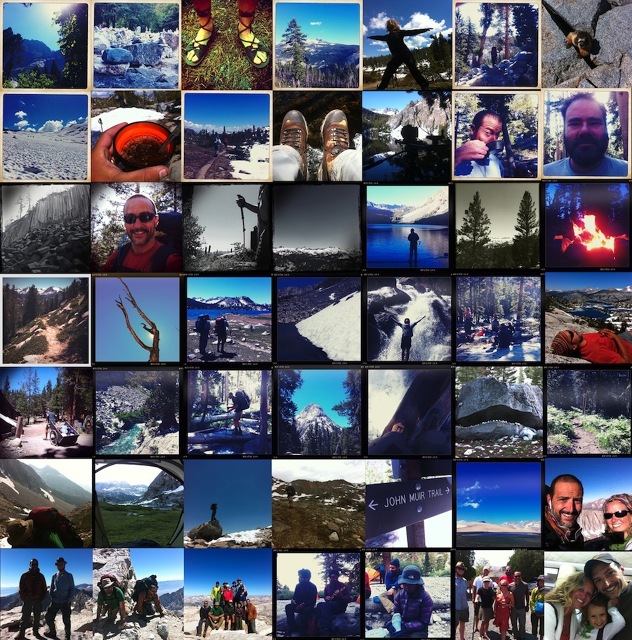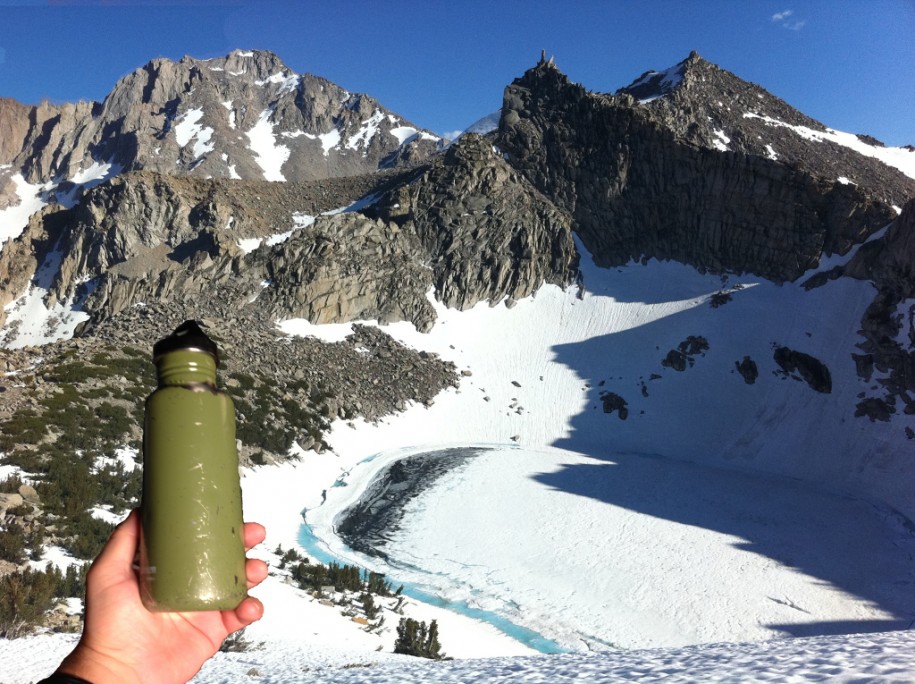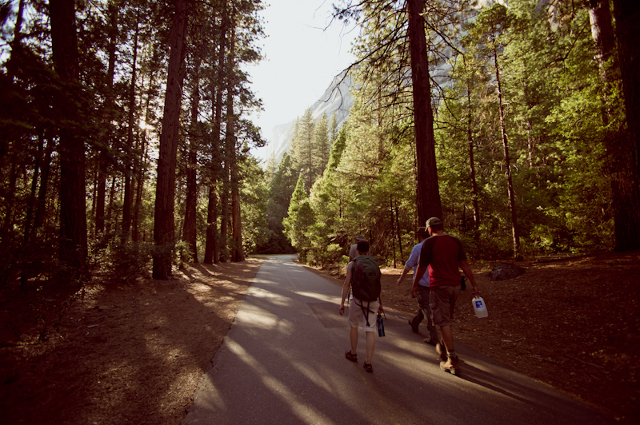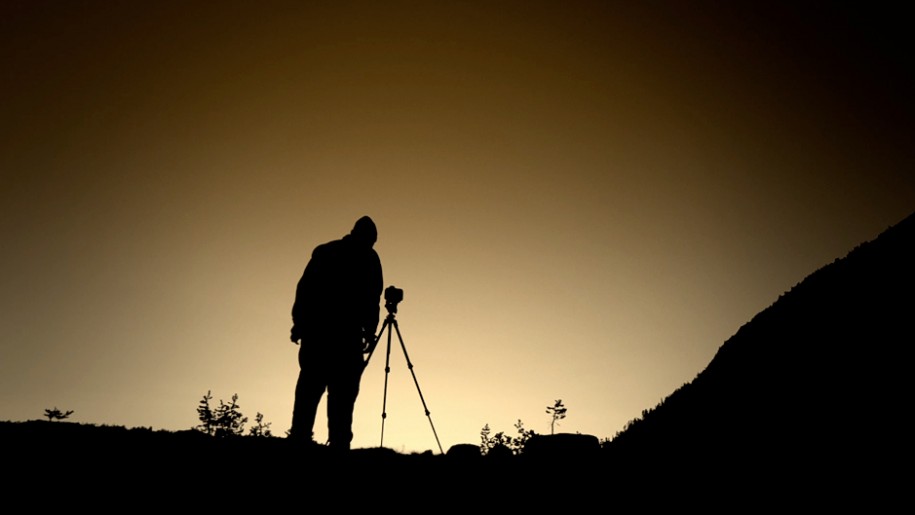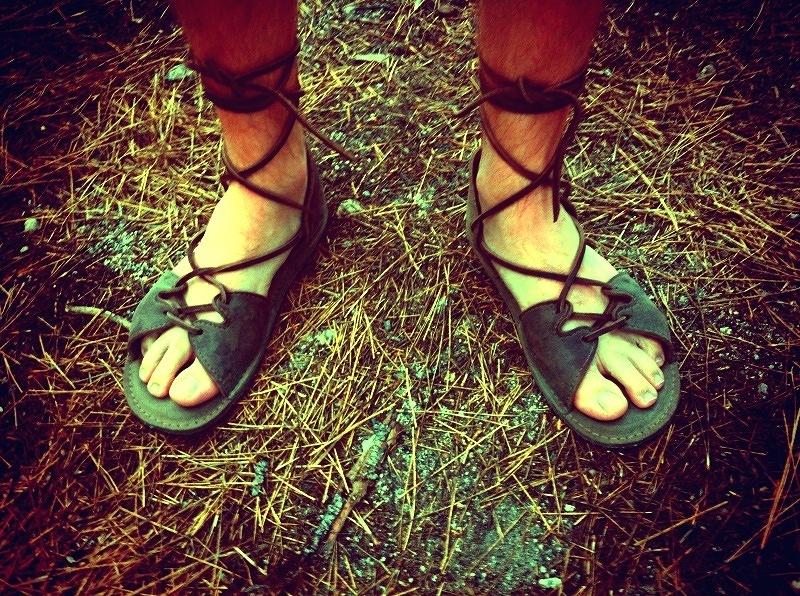Smartphones
4 Sep
We can pretend that technology doesn’t exist, and spending a month or so in the wilderness is a good way to do it, but these smart phones are pretty darn handy tools to have in the backcountry. You won’t get reception along most of the JMT, but there are several apps that we found really helpful.
The John Muir Trail Mapset and National Geographic National Parks Maps which are both GPS enabled were great assets to have. They are not to be relied upon solely for navigation, but they give you a reasonably accurate reading of your location which can really help. Also, you can load books, magazines, music and games for sleepless nights in the tent. You can even use it as a flashlight in a pinch.
Unless you are a really serious photographer, the video and pictures on these newer Iphones and androids is really, really good. To be honest for the internet and small prints it’s pretty hard to tell whether some of my pics were taken with my iphone or with my $3000 Canon 5D. Obviously, if you’re planning on getting large prints to hang in your living room, it’s not going to be as good. Smart phones also suffer in low-light and high-contrast situations, versus a high-end DSLR. We found all kinds of profession video apps like the digital slate application that helped us sync the audio and video from our interviews. There’s also some really cool shutter release, and timelapse apps out there. So for every level of photographer there’s a good reason to bring a smartphone along.
One use that I’ve only discovered since we’ve been back are all of the cool astronomy apps. The one I used was called “Starwalk,” and it’s nothing short of amazing. You point the phone to the heavens and it will label all of the stars and constellations in the night sky in real time. It’s really impressive! There are several other apps out there that do the same thing so give a couple a try. No more fist fights over whether that shiny red dot in the sky is Mars or just a bright star!
So when you think about saving the weight of a camera, trail guide, book, planetarium and lead civil war chess set it’s not bad at all.
As for power, look up the best setting for long battery life. On the iphone, airplane mode is great; just switch it off if using the GPS enabled applications. Also, turn off the wifi and 4G to extend life when airplane mode is disabled. There are some solar chargers (we used the GoalZero Sherpa 50) and smartphone cases with batteries built-in to extend battery life.
Bottom line is from a weight saving and functionality standpoint there is a good argument for bringing a smartphone with you on your next backpacking trip.
Altitude Sickness
31 Aug
Laying by the side of the trail for the past half hour, ridge in sight, heart racing uncontrollably, I came to the inevitable conclusion that I was indeed suffering from altitude sickness and I’d have to get down as soon as possible.
Jason, Zee and I had been attempting to cross Kersarge Pass just a week prior to starting the Muir Trail in order to drop off the last cache of food which would be dependent upon almost one month later. While they had driven up and camped at the Onion Valley campground (a 9,189 ft campsite, which in and of itself is pretty darn high) the evening before, I had stupidly decided that I could handle driving from sea level to crossing an 11,760 ft pass in less than a day. I had hiked in the same area numerous times prior to this, and hadn’t even considered that this could happen to me. Fortunately, this was not Everest and my situation, while incredibly unpleasant and very unnerving, was not life threatening. My experience with altitude sickness resulted in an uncontrollably fast heart rate, which I could not slow despite my best efforts, as well as intense naseau which almost ended with me losing my lunch into Jason’s water bottle.
As defined on Wikipedia, “Altitude sickness—also known as acute mountain sickness (AMS), altitude illness, hypobaropathy, or soroche—is a pathological effect of high altitude on humans, caused by acute exposure to low partial pressure of oxygen at high altitude. It commonly occurs above 2,400 metres (8,000 feet). It presents as a collection of nonspecific symptoms, acquired at high altitude or in low air pressure, resembling a case of “flu, carbon monoxide poisoning, or a hangover”. It is hard to determine who will be affected by altitude sickness, as there are no specific factors that correlate with a susceptibility to altitude sickness.”
AMS should not be taken lightly. Without the help of Jason and Zee, it would have taken at least twice as long for me to reach the trailhead where we had begun our hike. While I probably have not suffered anything worse than feeling terrible, at higher elevations altitude sickness can result in life threatening situations such as cerebral edema, where your brain swells, and pulmonary edema, where your lungs fill with fluid. The only way to completely counteract the effects of AMS is to get to a lower elevation, preferably as fast and as low as possible. If you plan on hiking in a place which immediately puts you at a high elevation (as we did), it is highly recommended that you spend a day or two acclimating at a higher elevation than you would normally be. For example, living at sea level, I definitely should have spent a day at the campsite at 9,189 ft, where I would not be over exerting myself. If this isn’t a possibility, you can also go see a regular physician, or a travel clinic, and they will be able to provide further information on ways to help lessen the symptoms for the first few days of your trip.
Before this incident, I prided myself on being immune to conditions like this, a statement which I realize in hindsight oozes with ignorant bravado. As I get older my body reacts to situations much differently than it used to, and I should have played the “better safe than sorry” game that I usually do. Preparation is crucial before a trip to a foreign place and will always result in a more enjoyable experience. I was fortunate that my situation ended only in a recurring joke when in the near proximity of Jason’s water bottle…and then food poisoning…a week before heading out on a month long hike…but that’s a blog entry for another time.
Please note: IN NO WAY SHOULD THE MUIR PROJECT BE CONSIDERED AS OFFERING MEDICAL ADVICE! THE CONTENT ON THE SITE IS PRESENTED FOR INFORMATIONAL/ENTERTAINMENT PURPOSES ONLY. NEVER DISREGARD MEDICAL ADVICE OR DELAY IN SEEKING IT BECAUSE OF SOMETHING YOU HAVE READ ON THE SITE!
Lean On Me
26 Aug
I can’t say I was happy when my alarm went off at 4 in the morning July 9th 2011, but I was pretty excited about what was to come. The night before I had been at one of my best friends weddings, and had only gotten home about an hour and a half before the Pogues song had roused me from my uneasy sleep. Within minutes Kia, with Durand in tow, was at my front door and we were on the road.
Kia had generously volunteered to drive us up to Yosemite so we wouldn’t have to leave a car there for a month. For those of you who haven’t done it, the drive up Highway 99 from Los Angeles to Yosemite isn’t all much to write home about, until the last hour or so. Kia had never been up there before, and one of my favorite things is to see people’s reactions when they first round the bend before Tunnel view and see El Capitan and Half dome in the distance. I think it’s the first hint of the magic that is Yosemite Valley. We stopped for a moment at Tunnel view, so she could take it all in. If I recall that was the first time I heard her utter the sentiment “I can’t believe I’ve never come up here before,” which she repeated more than once over that weekend.
The night before we started the trek, we all camped at the Backpackers Camp in the valley, and Kia joined us on our evening hike to Mirror Lake. In the rocks above the lake there’s a cairn garden, and we built one for good luck. Kia placed one of the stones in our cairn. She was there at the start of our journey, and now we’re lucky enough to have her on board to help us carry it through to the end. I can’t think of a more determined, knowledgeable and dependable person to help us finish the “Mile.. Mile and a Half” journey.
I am crashing this blog today to share exciting news with you – a dream of mine recently came true! You see, I have been a long time friend of Ric’s (since film school) and I have been a Producer on many of his projects for the past several years. I fell in love with this project in 2010 when I first heard about it while Ric, Durand and I were in Hawaii shooting a CBS promo for “Hawaii Five-O”. They invited me to join them as a hiker and a Producer. What a great offer, right? But I had to decline because I already had plans for my own adventure to scuba dive with sharks in the Great Barrier Reef. Not a bad reason to decline but sad nonetheless. As time passed and Ric and I worked on other promos together he would update me on how their JMT plans were progressing. Always, I would feel a twinge of longing to be part of the project but my travel and work schedule could not sync up and, likewise, both of their hiking buddy and Producing slots had been filled. However, now all of that has changed… Everything has aligned… I am happy to announce that Ric and the team have re-extended the invitation and I have joined the film as a Producer! Let the party begin!
I am thrilled to be a part of the project because I love this film! Let me tell you, I have seen the entire film several times and it makes me cry. It is heartwarming, inspiring, hilarious, gorgeous and a just a plain, fun ride. Also I am thrilled because I love this team. It is such an honor to be collaborating with a great group of artists.
So, in order for you to be able to experience this film for yourself and to be inspired to have adventures of your own, I’ll be helping get this film out into the world. I’ve got my pack on and I’m ready to climb this mountain! Besides, we have only a mile or a mile and a half to go, right guys? Guys…?
For more information about me (possibly even my pseudo-trail name), here’s my bio.
All the best,
Kia M. Kiso
Words can’t express
22 Aug
Dagnabit, I’ve run out of superlatives
Beautiful… Awesome…. Gorgeous… Amazing. All perfectly, good words, and usually accurate at the time they were used on the trail. However, as I’ve been going through the footage to write the script, I noticed a small problem.
There is just so much jaw dropping scenery, that halfway through the first day I had already blown through those four adjectives, and sadly didn’t think to bring along a thesaurus.
Two and a half weeks further down the trail, I’m looking at some of the most grand scenery on the planet, and all I can come up with is “that’s amazing,” for the two hundredth time.
Although, as I look at all of the Synonyms now, I don’t think anyone would ever say “that is one comely mountain,” or “that meadow sure was foxy,” unless of course the meadow happened to be infested with actual foxes.
I did do a better job with “Awesome.” I snuck in a few “awe-inspirings” and a “stunning” at least once on the trail. Some of the words I wish I would’ve used are: sublime, wondrous, astonishing, exalted, magnificent, dazzling and resplendent.
The synonym that I’m happiest I didn’t use is “pulchritudinous.” Why does this word even exist? Who needs an ugly word that means beautiful? If somebody ever says, “The view from Lower Palisade Lake sure is pulchritudinous,” please punch them in the mouth immediately, or unhesitatingly if you prefer.
Footwear
18 Aug
A short while ago, I spent the weekend at San Diego Comic-Con, the massive nerdgasm celebrating comics, television, and films geared toward those of the geek persuasion. (This was my sixth.) It is mecca to nerds, and while I walked the floor, stood in line (if nerds have one superpower, it’s the ability to stand in line), and walked some more; I had one thought, “I should have worn my hiking boots.”
Last year, I didn’t make it to comic-con, because of The Muir Project. And because of The Muir Project, I have the most comfortable -to this day- shoes ever. I’m not about to name brands (unless they want to sponsor us), but they just fit, they cradle my foot like a gentle lover. No matter how much I abuse them. And sure, after 12 hours hiking, my feet want nothing to do with them… but in the morning, they’re there again, with a loving embrace.
But they’re not made for every use. I wouldn’t play tennis in them. And I’m not crossing a stream in them either. For that, you pack sandals. The rest of The Muir Project was packing Tevas & Chacos but I was packing these:
They’ve been dubbed my “Jesus Sandals.” What started as a heckle turned into a term of admiration, though, when I walked over water.
On day one, a short day that found our camp set up shortly after lunch, Durand and I decided we should find a swimming hole in the Illilouette Creek. About a ¼ mile downstream we found a promising spot on the opposite shore. Short of hiking back to our first crossing point (at our camp) the only way across was a log that had fallen across a rocky gorge, about 14ft above a churning boulder filled channel.
Durand went first, in his Chacos, and halfway across he went to his hands and knees, and crawled the rest of the way. Then it was my turn and I was expecting I’d reach a point where I’d need to do the same. I reached that halfway point, and beyond, noting the look on Durand’s face. He picked up his jaw and told me how impressed he was. But I had more than enough traction, and the flexible soles wrapped around the log, giving me a good feel for the contour. I walked the entire plank with nary a wobble.
I can’t tell you how many times he told people on the trail about my sandals, and my miracle crossing. It got pretty embarrassing. To the point that I didn’t tell any of my companions a little secret- the flexible soles that contoured to the log, also contoured to every sharp rock at the bottom of the other streams we crossed. Making for some less than comfortable (if very secure) stream crossings.
Every shoe has it’s drawbacks, and benefits. Chose wisely. (And let’s keep that secret between us.)
